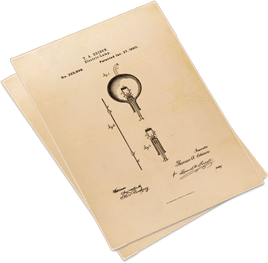Bohan Mathers has the experience and legal ability necessary to help you identify, protect, and defend the copyright that exists in your creative work from the moment its created.
What is copyright?
The copyright is, literally, the right to copy something. Under current U.S. copyright law, this right belongs to the creator of an original work of authorship. It exists from the moment the work is fixed in tangible form. The law recognized copyright for hundreds of years. In the United States, the U.S. Constitution specifically recognizes copyright (along with the patent right). It is the root of U.S. copyright law. Most nations in the world also recognize copyright and protect it in law.
The broad terms “work of authorship” and “fixed in tangible form” are difficult to define concisely. The ranges of their implications are covered elsewhere in these pages. In short, the author, artist, creator, or designer who records on paper, canvas, stone, film, optical disc, or computer chip an original, creative work in a form that can be viewed, heard, or otherwise perceived by others, either directly or with the aid of a machine, owns a copyright in that work.
This right is the exclusive right to make and distribute copies of the work, including the exclusive right to authorize others to make and distribute copies of the work. Both in the same form as the work was originally fixed in and any other form in which it may be. That last is important. Especially in these times. Almost anything can be endlessly, easily reproduced, and distributed by means ranging from photocopiers to the Internet.
Although work is protected regardless of the medium of expression onto or in which it may be copied. It is essential to understand that the copyright in a work applies to the original, creative expression. Only, as it may be reproduced in tangible media, including oral and visual recitation and performance. In short, this means the copyright applies to the telling of the story but not to the story itself. To the photograph of the mountain but not to the mountain.
That is, copyright protection does not extend to the ideas behind the work or to any ideas, methods, or systems put forth by it. Nor to any articles, devices, or events described by it. Not to facts recounted by or contained in it. Further, the extent of the copyright is limited in its duration and scope. By such lawful accommodations of practical reality as compulsory licensing, among other limitations.
The most basic limitation is that expression is “fixed” in a form that others may perceive. Simply stated, this means that your idea for, say, the next great American novel gives you no rights in the novel until you actually write it. Regardless of how perfectly or completely formed it may be in your mind.
If you write a synopsis or treatment of your novel, you may claim copyright in the expression that comprises the treatment, itself. You still have no right in the proposed story, planned novel, or any other embodiment of the characters, scenes, plot, or other story elements described in the treatment. If you write a chapter, you may claim copyright in the chapter, but still not in the novel or TV series that may follow from it.


